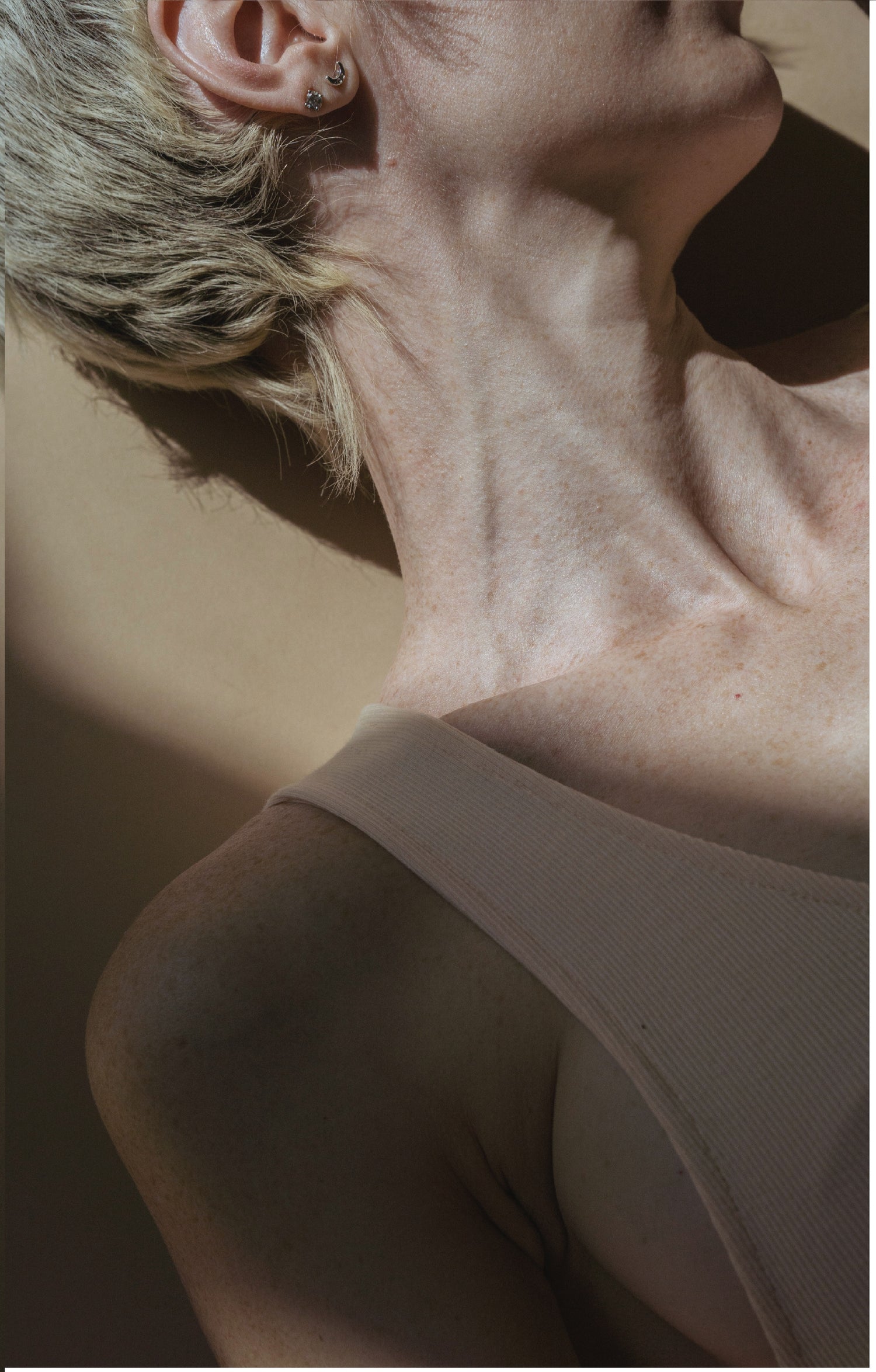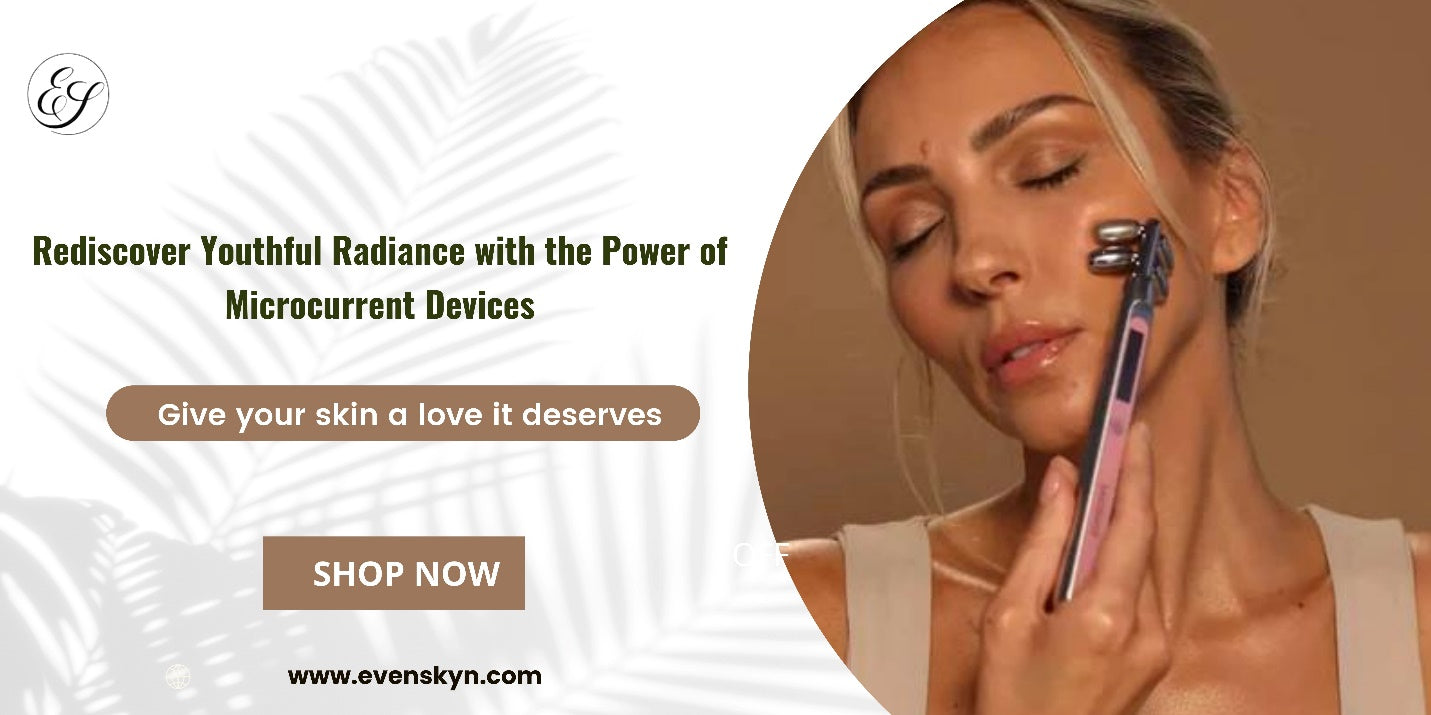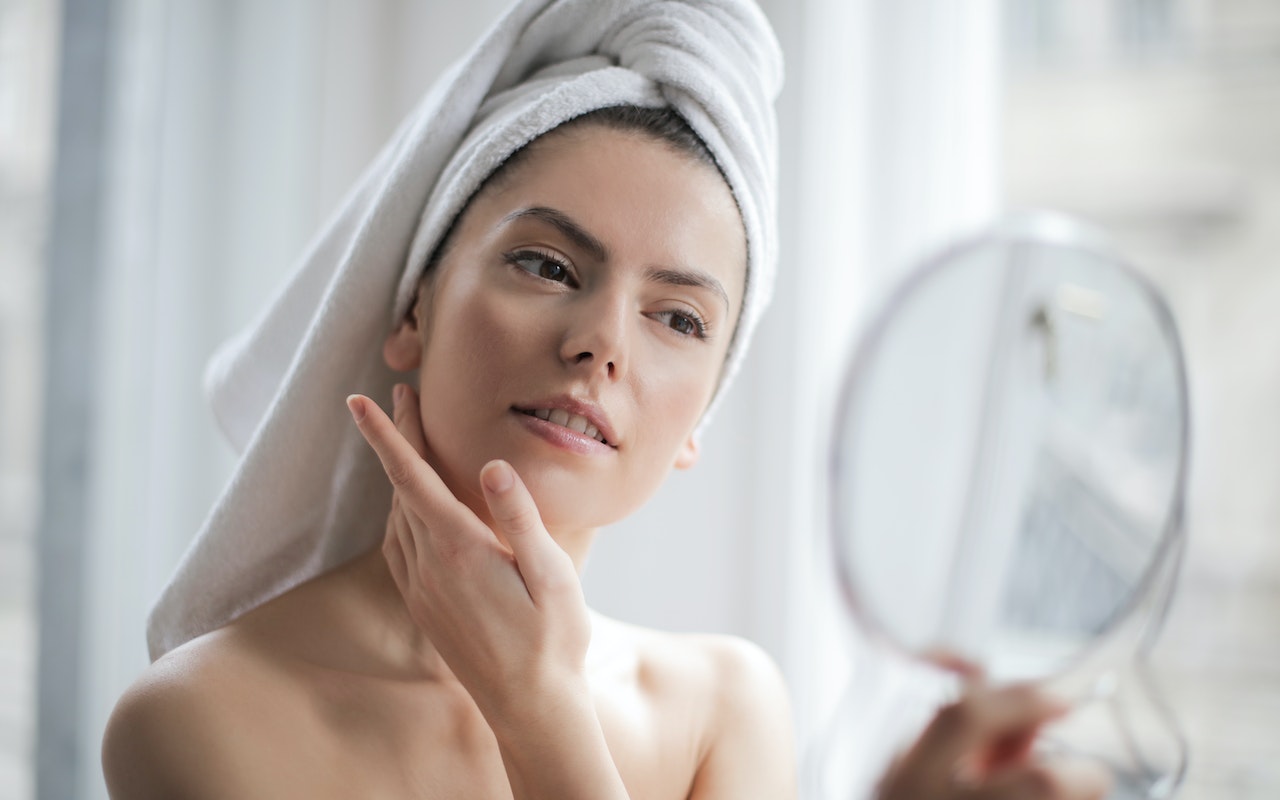Medically Reviewed by Dr. Lisa Hartford, MD
Many people pay a lot more attention to the skin of their face compared to the neck and décolleté area (upper chest), following a strict skincare routine that is usually focused on cleansing the face properly, applying generous amounts of skin care products, protecting it from the sun at all costs, exfoliating, massaging, and not skimping on the facials done at spas and aestheticians’ offices. However, we tend/choose to forget that skincare goes way beyond the face to the neck and décolletél areas. Who wants to have the best glowy, healthy face while those areas just don’t match? Board-certified dermatologist and skincare expert Andrea Suarez, MD, FAAD explains why those frequently neglected areas deserve particular care and attention, saying, “Because the skin on our neck is very thin, a lot of age-related loss of elasticity in the skin becomes very noticeable and results in sagging, fine lines, prominent lines, as well as bumpy, textural skin on the neck. It’s an area that undergoes age-related changes quite visibly and bothers many people.” She continues, “Wrinkles on the chest are really common especially in women because the area sees a lot of sun exposure and it can appear as horizontal, deep creases and more fine wrinkling on the upper chest and that can be accompanied by other signs of photoaging like hyperpigmentation, brown spots, dry skin and uneven skin tone in general.” With this in mind, read on to get the dermatologists’ advice on how to care for the neck and décolleté areas and the best methods to maintain the results over the long run.
First Things First, Sun Protection
Multiple studies have shown ultraviolet (UV) radiation to have many harmful effects on not just the face, but also the lips, ears, neck, upper chest, hands, and feet. Ultraviolet A (UVA) and Ultraviolet B (UVB) are the two types of UV radiation that can significantly contribute to premature aging of the skin, as well as skin color changes, weakening of the immune system, skin cancer, and cataracts (a condition that impairs eyesight and is very common as someone gets older). According to an Environmental Protection Agency (EPA) report, applying and reapplying sunscreen is the ideal and best method to safeguard the skin against sun damage, which is effective in absorbing and/or reflecting harmful UVA and UVB radiations. The Ireland native and Cambridge-educated skin expert Dr. Sam Bunting says that the single biggest reason for neck and décolleté aging is due to cumulative UV exposure over your lifetime, arguing that people “tend to skimp on” that area when it comes to SPF. “That means you’re more likely to see signs of sagging because of damaged elastin; thinning, wrinkling, and uneven skin tone. This is particularly common among those who spend lots of time outdoors and maybe don’t think about reapplying sunscreen throughout their day,” she explains. The FDA makes it mandatory for every sold sunscreen to contain a Sun Protection Factor (SPF) label, recommending a sunscreen with an SPF of a minimum of 15. It is worth mentioning that an SPF of 30 does not mean it provides double protection compared to an SPF of 15; instead, an SPF of 15 protects the skin from 93% of UVB rays when properly applied, and an SPF of 30 gives the skin a 97% percent protection. While many commercially available sunscreens mainly protect against UVB rays, there are a good number of manufacturers that make sunscreens with ingredients that can also safeguard the skin against some UVA rays.“These ‘broad-spectrum’ sunscreens are highly recommended,” the EPA notes.
The Fountain of Youth Is Said To Be Filled with Vitamin A
Retinds are vitamin A derivatives that were first introduced as an acne treatment and were later discovered to have anti-aging effects on the treated subjects. Now, topical vitamin A is included in many skin serums, creams, and lotions to help treat acne, acne scars, dark spots (hyperpigmentation), and stretch marks, as well as improve common signs of aging like fine lines and wrinkles. "Retinoids work by binding to retinoic acid receptors, which then can act as transcription factors and affect gene expression. This makes them very powerful and able to produce significant changes in the skin," explains Dr. Hadley King, a board-certified dermatologist in New York City. The impressive skin repair and rejuvenation benefits of retinoids were highlighted in several scientific research, with one clinical study even concluding that “retinoids are the most promising agents that are available for the treatment of aging” among various anti-aging agents. Board-certified dermatologist Marisa Garshick, MD, FAAD stresses the importance of incorporating retinoids in our skincare routine, saying, "Retinoids are a key part of an anti-aging regimen for the face, neck, and chest as it helps to regulate skin cell turnover and promote collagen production, improving the texture of the skin and reducing fine lines and wrinkles.” For those who are new to using retinoids, however, they should carefully introduce it to the skin to avoid the side effects that come with its anti-aging benefits. "That said, it is important to remember to apply only a small amount and apply just a few times per week, based on tolerability to avoid drying the skin out or causing irritation."
A Promising Technology To Firm Up Loose Neck & Upper Chest
A more advanced method to tighten up loose skin on the neck and chest is radiofrequency (RF) therapy, a noninvasive cosmetic procedure that works on heating the tissue below the dermis and increasing the production of collagen to firm up the treated area without any surgical intervention. Being initially introduced in medicine for electrocautery in the 1920s, RF has found its way into almost every medical specialty, including sleep medicine, urology, cardiology, and oncology, and its use in the aesthetic field has increased over recent years. A small study evaluated the clinical effects of the RF therapy found that those who were subject to the treatment witnessed a “significant increase” in the production of collagen types I and III, concluding that while the non-surgical producer is not as effective in tightening loose skin as ablative treatments, radiofrequency is still “a promising treatment option for photoaging with fewer side effects and downtime.” According to Cleveland Clinic, the procedure is helpful in minimizing the appearance of sun damage, improving skin tone and texture, and reducing the signs of aging like fine lines, wrinkles, and sagging skin.
Sleep the Way Your Skin Loves
Beauty sleep doesn’t just mean sleeping before midnight for 8 hours a day, but it also means you sleep the ‘right’ way to prevent sleep wrinkles on the face, neck, and upper chest that form over time. It is widely agreed upon that the best sleeping position for fewer wrinkles is on your back. "If you are a face sleeper, somebody who sleeps on their right or left side or directly on your face for a prolonged period of time, there's pressure compressing your skin," says Dr. Erum Ilyas, MD a dermatologist in King of Prussia, PA. "So there's a crushing effect that occurs. With that element of crush that's consistently there, your skin can start to break down some collagen localized in those regions to sometimes etch in lines." Dr. Suarez stresses the importance of sleeping on the back for less creasing of the skin of both the neck and upper chest, especially since people usually spend a considerable portion of their day sleeping. “When you side sleep, there's often a gap between your neck and your shoulder where you're not supported,” she explains. “If you have something to fill that area in a little bit more uniformly, like a neck pillow or body pillow, theoretically, you won't crush all the way down and then have all those lines in your neck. Try to avoid positions that cause unnecessary creasing of the skin of the upper chest. For example, if you like to curl up on the couch try to reposition yourself so you’re not that deep crease. If you sleep on your side try to train yourself to sleep on your back.” If you’re a die-hard side sleeper, however, Dr. Suarez advises trying silicone patches for the upper chest to help smooth out the wrinkles and prevent that creasing with body positions. Alternatively, you can opt for a chest pillow that can be worn at night comfortably to keep the chest area flat while sleeping on your side. “It’s not going to remove the wrinkles permanently, it just reduces that unnecessary creasing that with time can contribute to the formation of those chest wrinkles,” she points out.
Your Body Might be ‘Browning from the Inside Out’
While trying to tighten loose neck and décolleté skin by protecting it from the sun, applying anti-aging products, sleeping on your back, and attending professional RF sessions (or doing it at home) can certainly give you noticeable results, it is important to combine those efforts with an inside out approach to ensure you get the best results and maintain it over the long run. According to Andrew Nish, MD, UnityPoint Health, table sugar can take its toll on our skin in several ways, which include the increased appearance of wrinkles, sagging in the neck and chin, development of dark spots, acne, and slower healing of cuts and scraps. “If you put a banana out on the counter and unpeel it, what happens in 24-48 hours? It gets brown,” explains Dr. Nish. “What’s happening is the sugars in that banana are reacting with proteins, causing cross-linking and the brown color (browning reaction). The exact same reaction is happening in our bodies. We’re browning from the inside out.” Explaining the science behind aging caused table sugar, Dr. Nish continues, “Aging is part of growing older, but it’s accelerated by sugar. Without getting too technical, at the end of each strand of our DNA is a little cap, called a telomere, which protects our DNA from damage. Every time our DNA is read and duplicated, those telomeres shorten. While our bodies normally replace those telomeres, sugar quickens that shortening, and thereby, advances the aging process.”
References:
Austin GK, Struble SL, Quatela VC. Evaluating the effectiveness and safety of radiofrequency for face and neck rejuvenation: A systematic review. Lasers Surg Med. 2022 Jan;54(1):27-45. doi: 10.1002/lsm.23506. Epub 2021 Dec 19. PMID: 34923652.
Baldwin H, Webster G, Stein Gold L, Callender V, Cook-Bolden FE, Guenin E. 50 Years of Topical Retinoids for Acne: Evolution of Treatment. Am J Clin Dermatol. 2021 May;22(3):315-327. doi: 10.1007/s40257-021-00594-8. PMID: 33871811.
Dayan E, Burns AJ, Rohrich RJ, Theodorou S. The Use of Radiofrequency in Aesthetic Surgery. Plast Reconstr Surg Glob Open. 2020 Aug 17;8(8):e2861. doi: 10.1097/GOX.0000000000002861. PMID: 32983755; PMCID: PMC7489578.
el-Domyati M, el-Ammawi TS, Medhat W, Moawad O, Brennan D, Mahoney MG, Uitto J. Radiofrequency facial rejuvenation: evidence-based effect. J Am Acad Dermatol. 2011 Mar;64(3):524-35. doi: 10.1016/j.jaad.2010.06.045. PMID: 21315951; PMCID: PMC6541915.
Mukherjee S, Date A, Patravale V, Korting HC, Roeder A, Weindl G. Retinoids in the treatment of skin aging: an overview of clinical efficacy and safety. Clin Interv Aging. 2006;1(4):327-48. doi: 10.2147/ciia.2006.1.4.327. PMID: 18046911; PMCID: PMC2699641.









Leave a comment
All comments are moderated before being published.
This site is protected by hCaptcha and the hCaptcha Privacy Policy and Terms of Service apply.